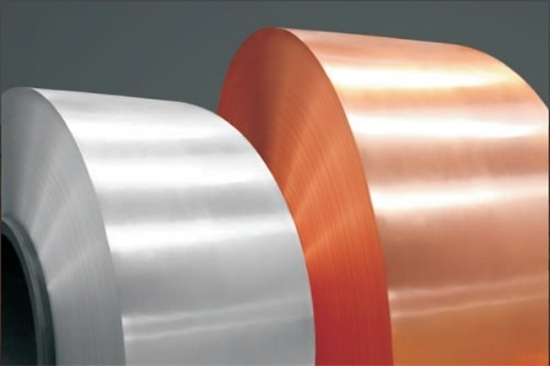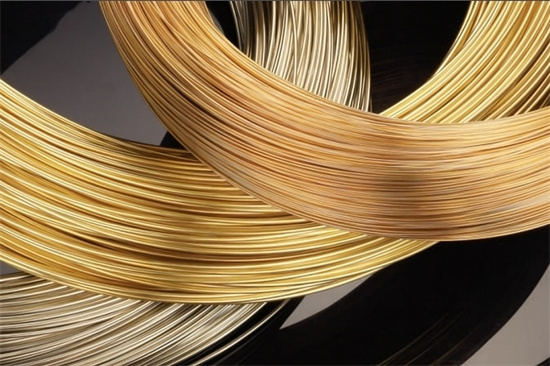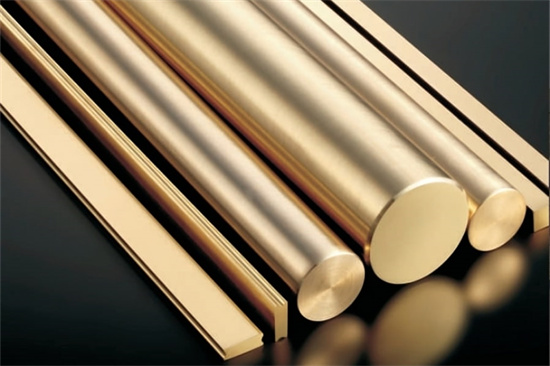


CuAl10Fe3Mn2: A Comprehensive Breakdown of This Reliable Alloy
Low MOQ
Provide low minimum order quantity to meet different needs.
OEM & ODM
Provide customized products and design services to meet unique customer needs.
Adequate Stock
Ensure fast order processing and provide reliable and efficient service.
Customer Satisfaction
Provide high quality products with customer satisfaction at the core.
share this article
Table of Contents
When you’re faced with the challenge of choosing the right material for demanding industrial applications, CuAl10Fe3Mn2 is a name that often pops up. This copper-aluminum alloy, enhanced with iron and manganese, offers a fantastic balance of strength, corrosion resistance, and wear resistance. Whether you’re working in marine environments, aerospace, or heavy machinery, CuAl10Fe3Mn2 is a material that can stand up to the toughest tasks.
In this article, we’ll walk you through everything you need to know about CuAl10Fe3Mn2—from its composition and properties to its applications, specifications, and how it compares to other alloys. We’ll also delve into pricing, suppliers, and frequently asked questions so that by the end, you’ll have a complete understanding of why this alloy is such a popular choice.
Overview
CuAl10Fe3Mn2 is a copper-aluminum alloy containing around 10% aluminum, 3% iron, and 2% manganese. These elements combine to give the alloy its high strength, excellent resistance to corrosion, and good wear resistance, making it ideal for use in harsh environments.
Let’s break it down:
- Copper (Cu): The base material, providing ductility and thermal conductivity.
- Aluminum (Al): Increases the strength and corrosion resistance of the alloy.
- Iron (Fe): Adds hardness and enhances wear resistance.
- Manganese (Mn): Improves toughness and helps stabilize the alloy’s structure.
This alloy is part of the aluminum bronze family, known for their outstanding mechanical properties and resistance to corrosion, especially in seawater and chloride-rich environments.
Composition and Properties
Understanding the composition of CuAl10Fe3Mn2 is crucial to fully appreciating its performance in various applications. Each element contributes specific characteristics that make this alloy a standout in industrial and marine engineering.
Composition Breakdown
| Element | Percentage (%) |
|---|---|
| Copper (Cu) | 83 – 87 |
| Aluminum (Al) | 9 – 11 |
| Iron (Fe) | 2.5 – 4.0 |
| Manganese (Mn) | 1.5 – 3.0 |
| Nickel (Ni) | ≤ 1.0 |
| Zinc (Zn) | ≤ 0.2 |
| Silicon (Si) | ≤ 0.1 |
Properties
The alloy’s unique composition gives it a range of mechanical and physical properties that make it suitable for high-stress environments, where both strength and corrosion resistance are required.
| Property | Value |
|---|---|
| Tensile Strength | 600 – 850 MPa |
| Yield Strength | 250 – 350 MPa |
| Elongation | 12 – 20% |
| Hardness (HB) | 140 – 180 HB |
| Density | ~7.5 g/cm³ |
| Thermal Conductivity | 50 – 60 W/m·K |
| Electrical Conductivity | ~7% IACS |
| Melting Point | 1020°C – 1050°C |
| Coefficient of Expansion | 18 x 10⁻⁶/°C |
Key Insights on Properties
- Tensile Strength: With values up to 850 MPa, CuAl10Fe3Mn2 can handle high stress without deformation, making it ideal for load-bearing components.
- Corrosion Resistance: Thanks to its aluminum content, this alloy performs especially well in marine and chemical environments, resisting oxidation and chloride attack.
- Wear Resistance: The addition of iron and manganese boosts the alloy’s ability to withstand abrasion and friction—perfect for moving parts like bearings and gears.
Applications
Thanks to its remarkable mechanical properties and corrosion resistance, CuAl10Fe3Mn2 is used in a wide range of industries. Let’s take a look at some of the most common applications where this alloy has proven to be a stellar performer.
Common CuAl10Fe3Mn2 Applications by Industry
| Industry | Applications |
|---|---|
| Marine | Propellers, shafts, pump components, valves |
| Aerospace | Landing gear components, bushings, bearings |
| Oil & Gas | Valve bodies, pump parts, connectors |
| Heavy Machinery | Gears, bearings, guide rails, wear plates |
| Automotive | Bushings, engine components, valve guides |
| Construction | Hydraulic cylinder parts, sliding components |
Why CuAl10Fe3Mn2 is Ideal for These Applications
- Marine Environments: The alloy’s exceptional corrosion resistance and strength make it the go-to material for propellers, shafts, and other components exposed to seawater.
- Aerospace: CuAl10Fe3Mn2 is strong enough to endure the high stress and wear experienced by landing gear and bearings, while also providing good fatigue resistance.
- Oil & Gas: In environments where abrasion and corrosion are constant challenges, this alloy’s wear resistance and durability come into play.
Specifications, Sizes, and Standards
When selecting CuAl10Fe3Mn2 for a specific project, it’s important to know the available sizes, grades, and standards. The following tables provide detailed information about the specifications you can expect when sourcing this alloy.
Specifications
| Specification | Details |
|---|---|
| Available Forms | Rods, Plates, Bars, Tubes |
| Diameter Range (Rods) | 10 mm to 300 mm |
| Thickness Range (Plates) | 2 mm to 100 mm |
| Length (Bars) | Up to 6 meters |
| Temper | Annealed, Cold-Worked |
| Standards | ASTM B150, DIN 17665, EN 12163 |
Grades
| Grade | Attributes |
|---|---|
| CuAl10Fe3Mn2-Soft (Annealed) | More ductile, easier to machine |
| CuAl10Fe3Mn2-Hard (Cold-Worked) | Increased strength, better wear resistance |
Suppliers and Pricing Information
If you’re sourcing CuAl10Fe3Mn2, it’s crucial to know where to find reliable suppliers and what pricing to expect. Prices for CuAl10Fe3Mn2 can vary based on factors such as form, grade, and location. Below is a list of common suppliers and general pricing information.
Suppliers and Pricing
| Supplier | Location | Price Range (per kg) | Delivery Time |
|---|---|---|---|
| Shanghai Metals | China | $18 – $30 | 2-4 weeks |
| Metal Supermarkets | USA | $20 – $35 | 1-2 weeks |
| EuroAlloys | Europe | €22 – €35 | 3-4 weeks |
| CopperAlloy Solutions | UK | £25 – £38 | 2-3 weeks |
Factors Influencing Pricing
- Form: Rods, plates, and bars may have different pricing due to the size and processing requirements.
- Grade: Cold-worked grades will often cost more due to the additional processing steps involved.
- Supplier Location: The cost of shipping and import/export duties can affect the final price you pay.
Advantages and Limitations
Like any material, CuAl10Fe3Mn2 has its pros and cons. While it excels in certain areas, there are also some limitations that you need to be aware of before choosing it for your project.
Advantages and Limitations
| Advantages | Limitations |
|---|---|
| Excellent corrosion resistance | More expensive than standard copper alloys |
| High strength and durability | Lower electrical conductivity than pure copper alloys |
| Superior wear resistance | Can be more difficult to machine than softer alloys |
| Good machinability in annealed state | Cold-worked versions may require special tools |
| Non-sparking properties | Heavier than some alternative materials |
Insights on Advantages and Limitations
- CuAl10Fe3Mn2 is a great option for applications where strength, corrosion resistance, and durability are crucial, but it does come with a higher price tag compared to simpler alloys like brass.
- Its non-sparking properties make it ideal for use in environments where flammability or explosion hazards are a concern, such as in the oil and gas industry.
CuAl10Fe3Mn2 vs. Other Copper Alloys
When selecting a material for your project, it’s essential to compare CuAl10Fe3Mn2 to other copper alloys. How does it hold up against alternatives like CuAl9Fe3, CuSn12, or CuNi10Fe1Mn? Let’s break it down.
Comparison of CuAl10Fe3Mn2 with Other Copper Alloys
| Property | CuAl10Fe3Mn2 | CuAl9Fe3 | CuSn12 | CuNi10Fe1Mn |
|---|---|---|---|---|
| Tensile Strength | 600 – 850 MPa | 550 – 750 MPa | 400 – 550 MPa | 380 – 550 MPa |
| Yield Strength | 250 – 350 MPa | 220 – 320 MPa | 150 – 250 MPa | 150 – 300 MPa |
| Elongation | 12 – 20% | 15 – 25% | 20 – 30% | 30 – 40% |
| Corrosion Resistance | Excellent | Very Good | Moderate | Excellent |
| Wear Resistance | High | High | Moderate | Moderate |
| Machinability | Good | Good | Good | Poor |
| Non-Sparking | Yes | Yes | No | No |
Key Takeaways from the Comparison
- CuAl10Fe3Mn2 offers a superior balance of strength and corrosion resistance compared to CuSn12 or CuNi10Fe1Mn, making it a better choice for marine and industrial applications.
- CuAl9Fe3 is slightly easier to machine, but CuAl10Fe3Mn2 provides higher tensile strength and durability, making it more suitable for wear-resistant applications.
Frequently Asked Questions (FAQ)
Here, we answer some of the most common questions about CuAl10Fe3Mn2 to help you make an informed decision.
| Question | Answer |
|---|---|
| What is CuAl10Fe3Mn2 used for? | It is used in marine, aerospace, oil & gas, and heavy machinery industries for components like propellers, bushings, and bearings. |
| Is CuAl10Fe3Mn2 corrosion resistant? | Yes, it has excellent corrosion resistance, particularly in seawater and chloride-rich environments. |
| How much does CuAl10Fe3Mn2 cost? | Prices typically range from $18 to $35 per kg, depending on the supplier, form, and grade. |
| Can CuAl10Fe3Mn2 be heat treated? | CuAl10Fe3Mn2 is typically cold-worked for increased strength but can also be annealed for improved machinability. |
| What are the key properties of CuAl10Fe3Mn2? | It offers a combination of high strength, good corrosion resistance, and wear resistance, ideal for marine and industrial applications. |
| Is CuAl10Fe3Mn2 easy to machine? | Yes, in its annealed state, it is relatively easy to machine, though cold-worked versions may require special tools. |
Conclusion
CuAl10Fe3Mn2 is a high-performance copper alloy that excels in demanding environments where strength, wear resistance, and corrosion resistance are critical. Whether you’re working on marine components, aerospace parts, or industrial machinery, this alloy offers the durability and reliability you need.
While it may come at a higher cost compared to simpler alloys, its superior properties—especially in marine environments—make it well worth the investment. If you’re looking for a material that can withstand extreme conditions and offer long-term performance, CuAl10Fe3Mn2 should be at the top of your list.
This guide has covered everything from composition and properties to applications, pricing, and comparisons. Armed with this information, you can confidently choose CuAl10Fe3Mn2 for your next project!
Maybe you want to know more about our products, please contact us
Get Latest Price
About Met3DP
Product Category
HOT SALE
CONTACT US
Any questions? Send us message now! We’ll serve your request with a whole team after receiving your message.

Metal Powders for 3D Printing and Additive Manufacturing
COMPANY
PRODUCT
cONTACT INFO
- Qingdao City, Shandong, China
- [email protected]
- [email protected]
- +86 19116340731








